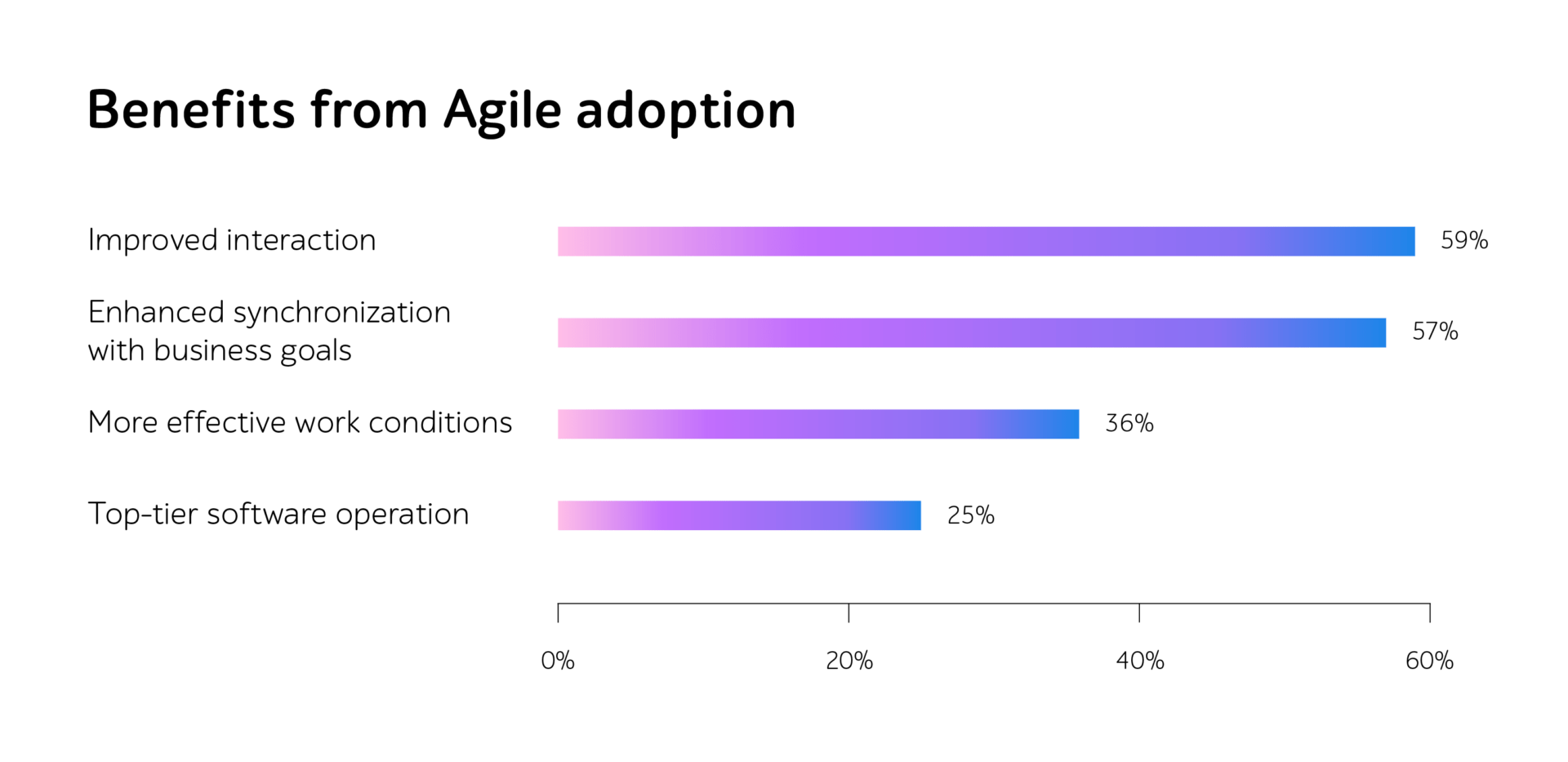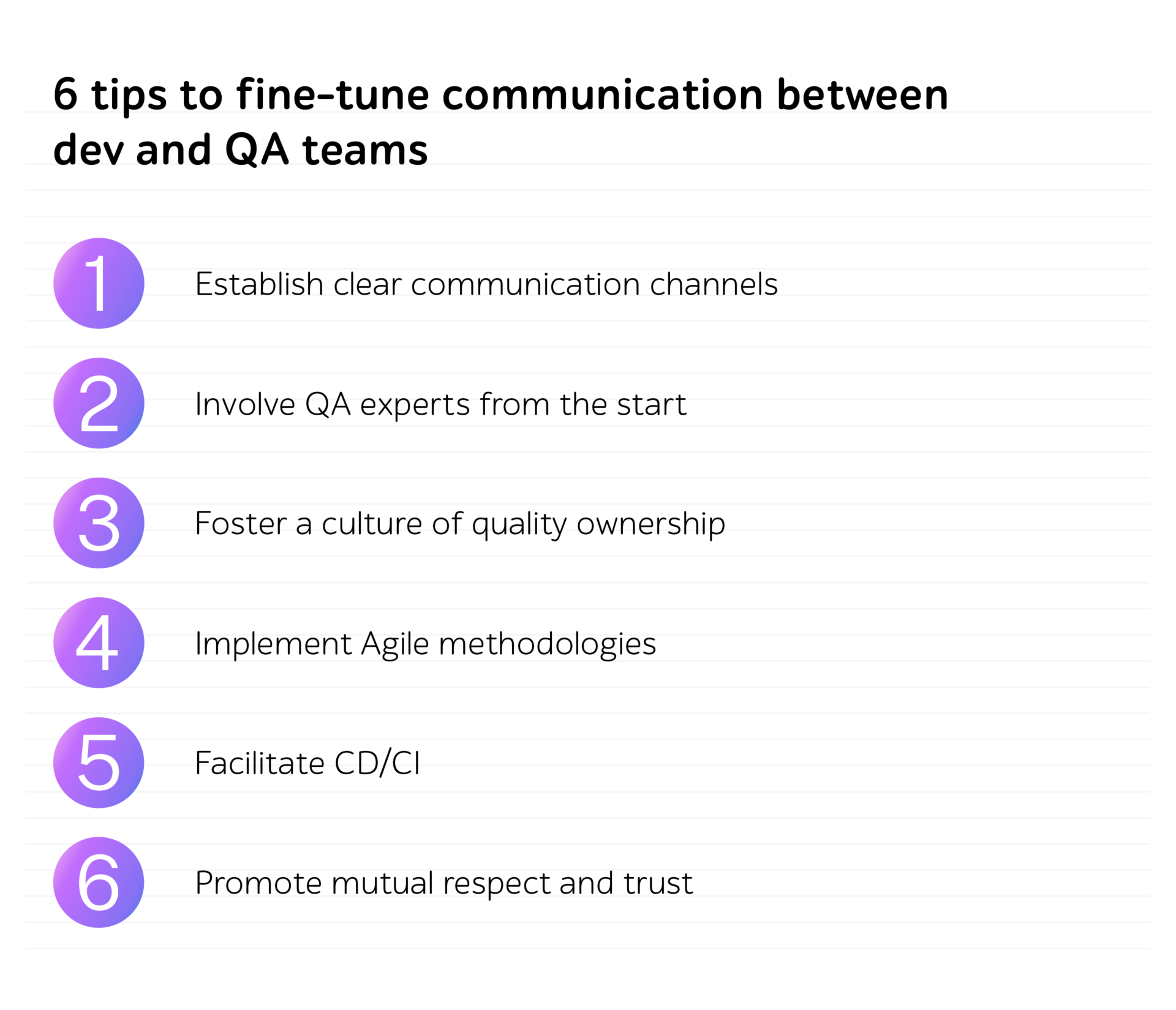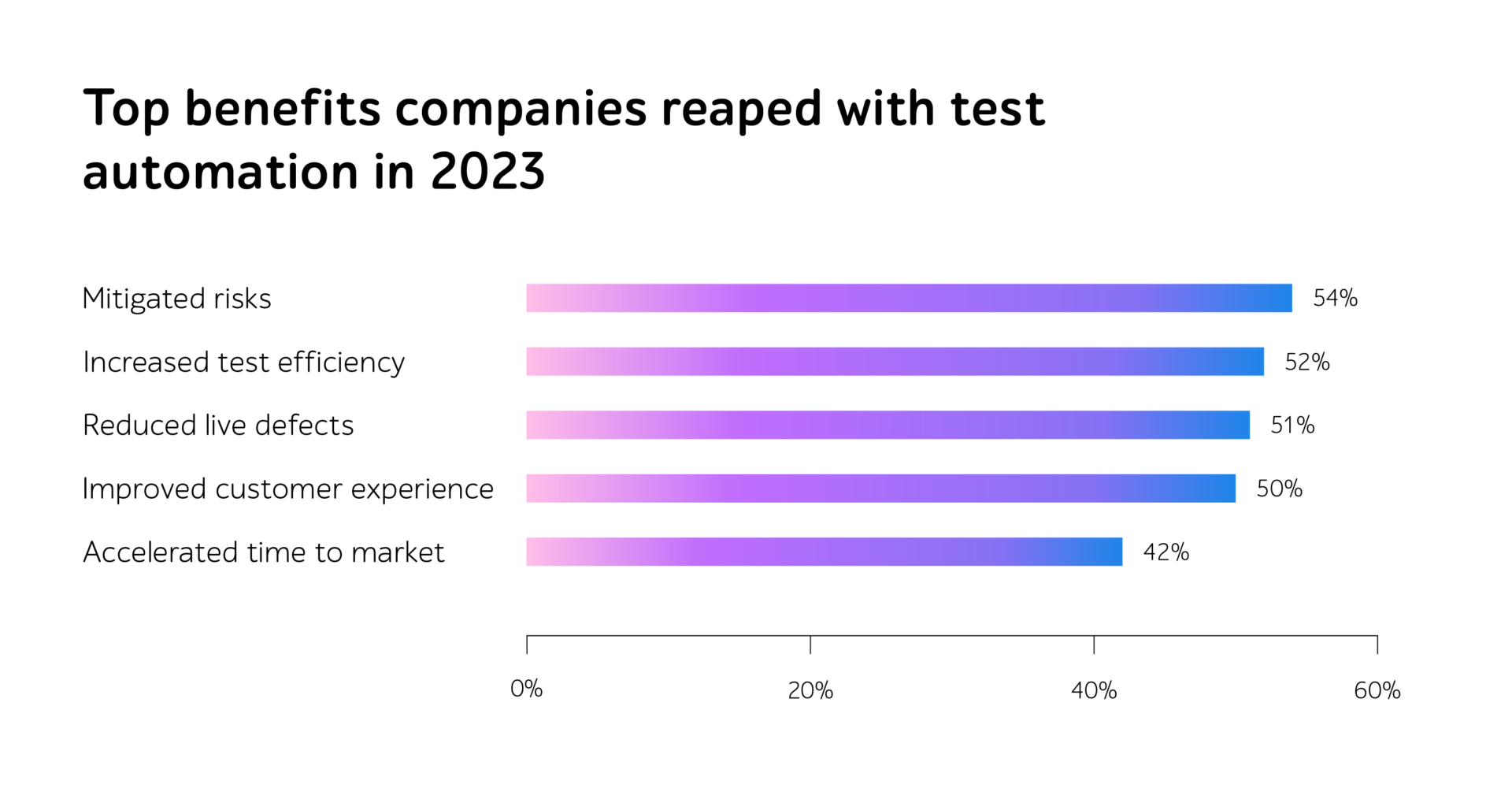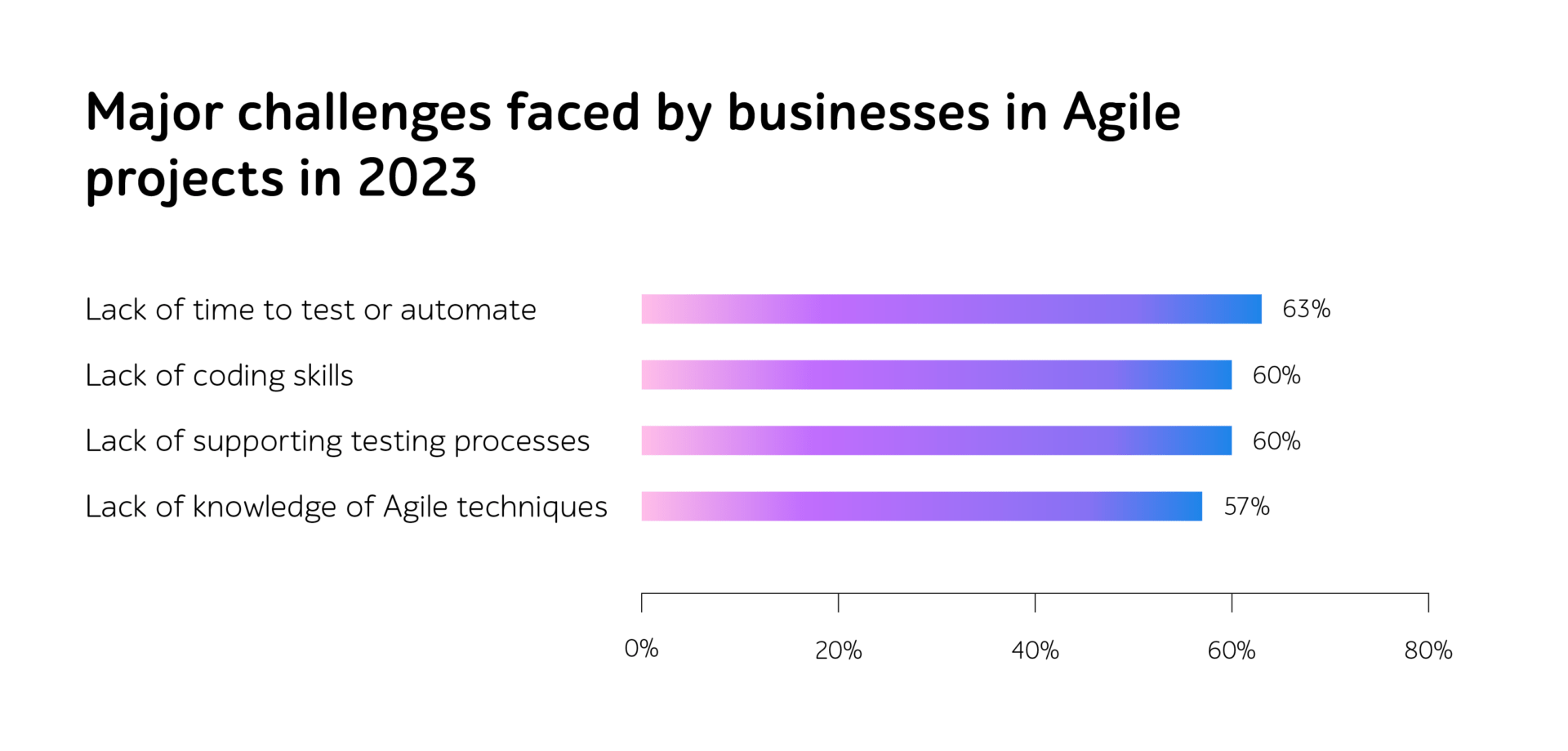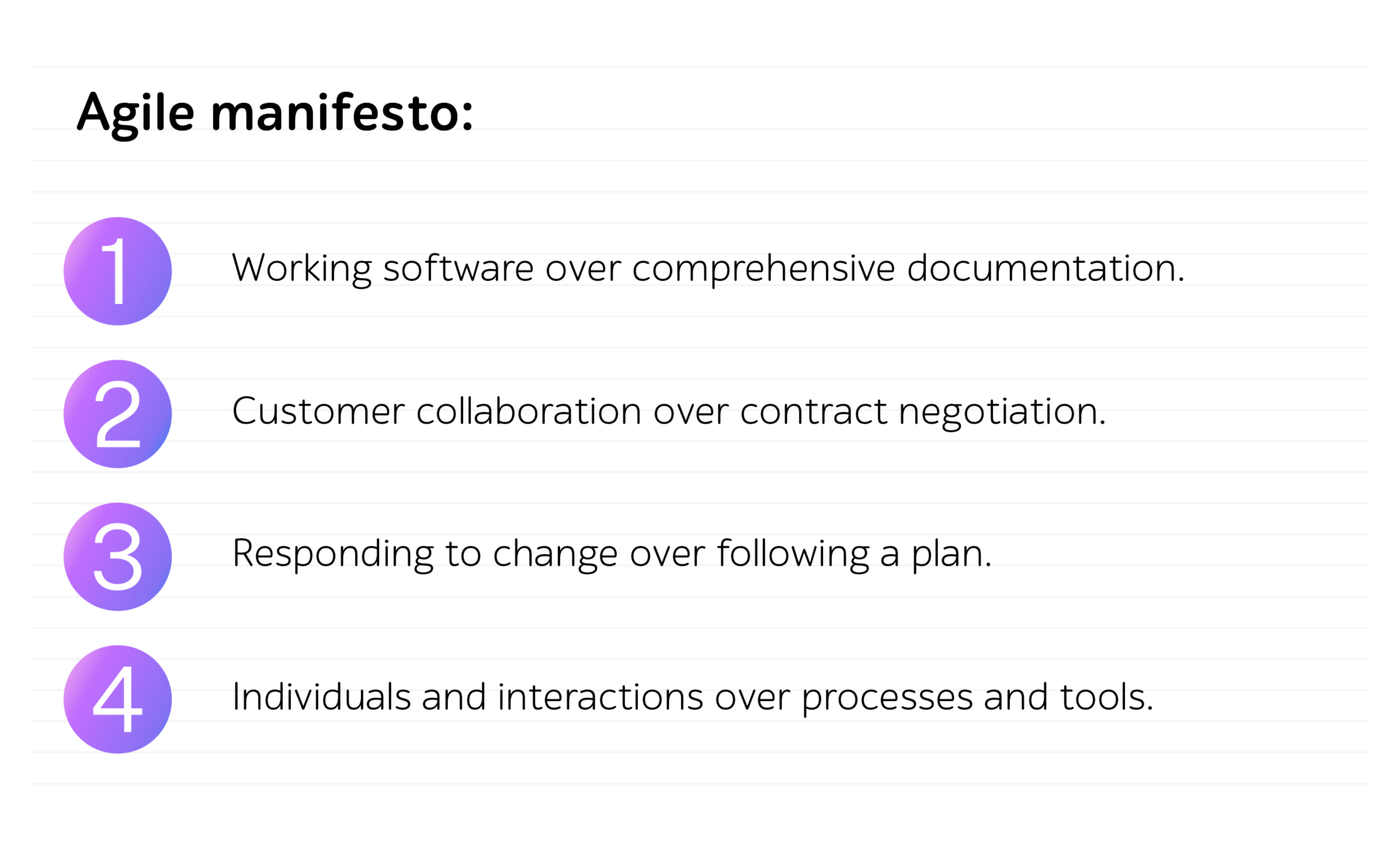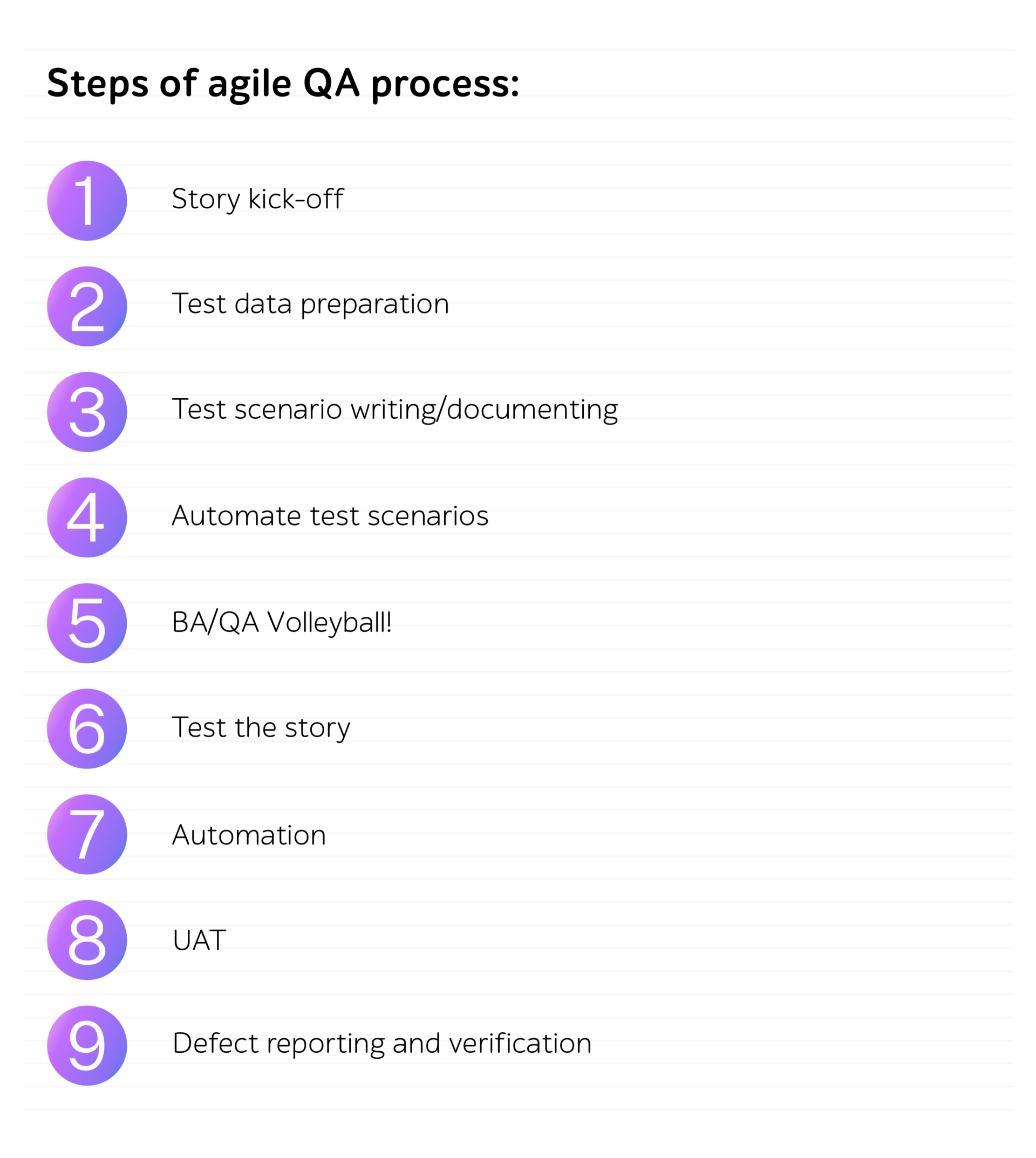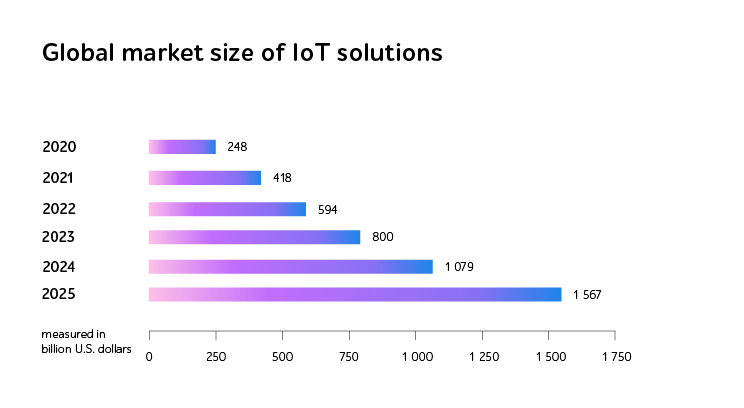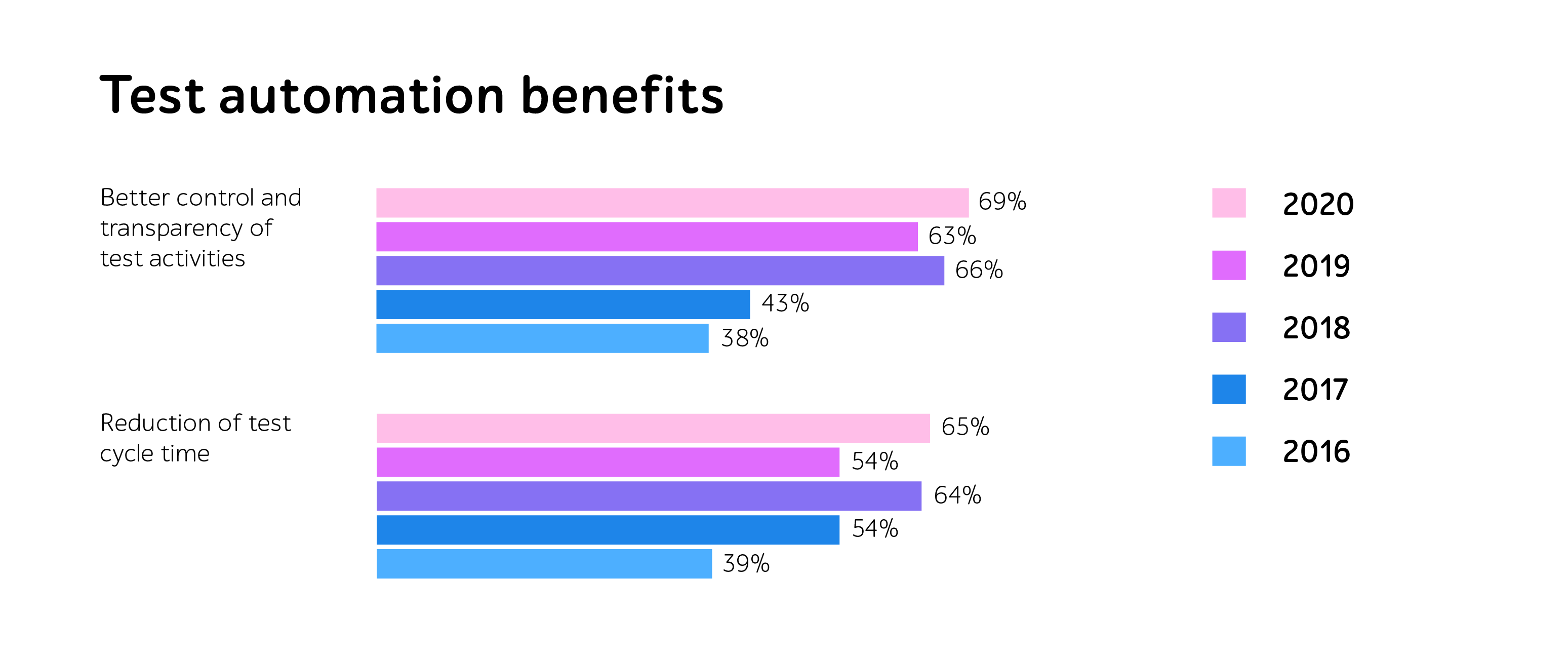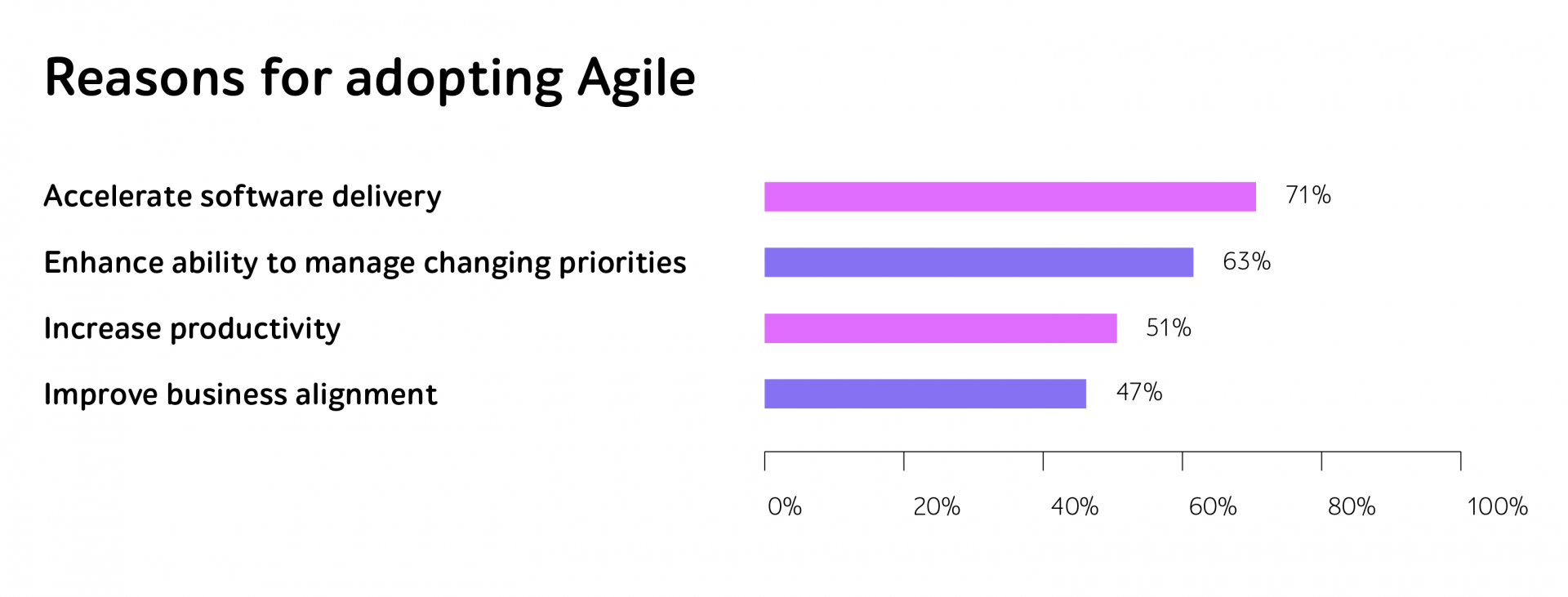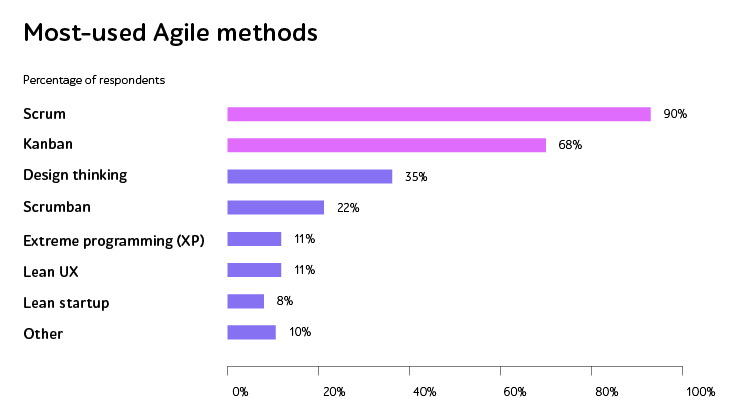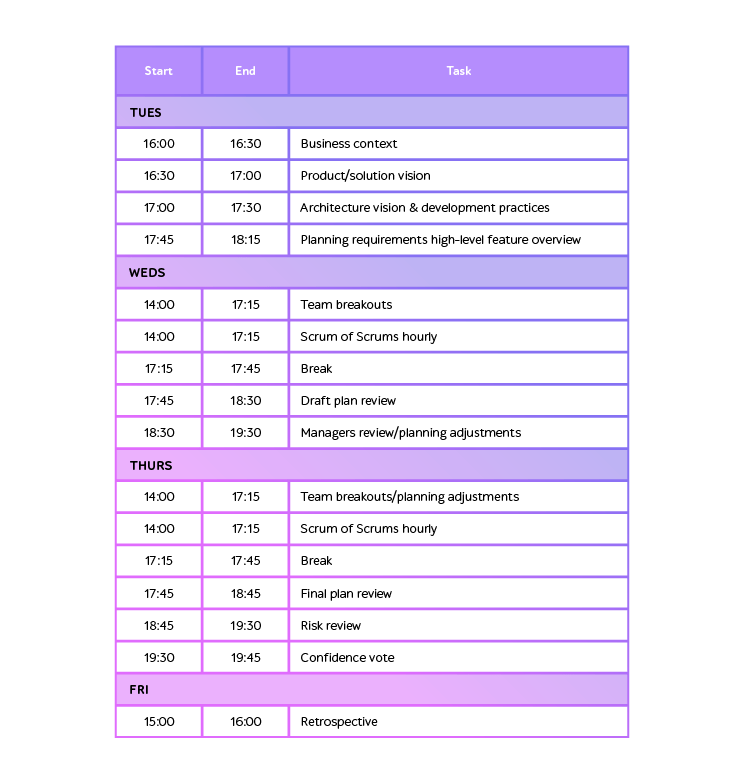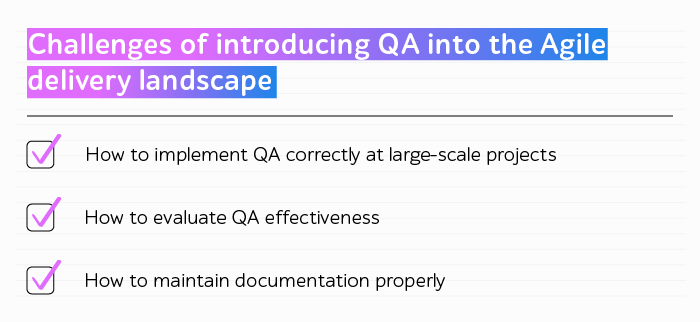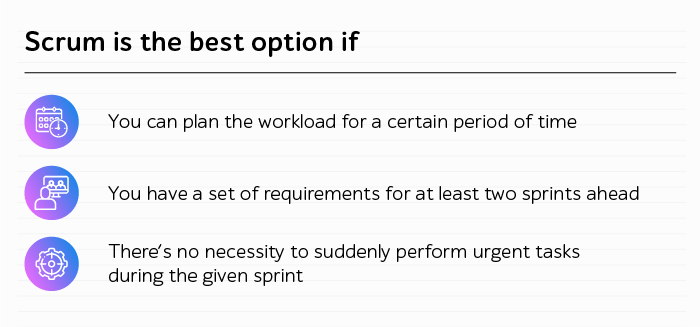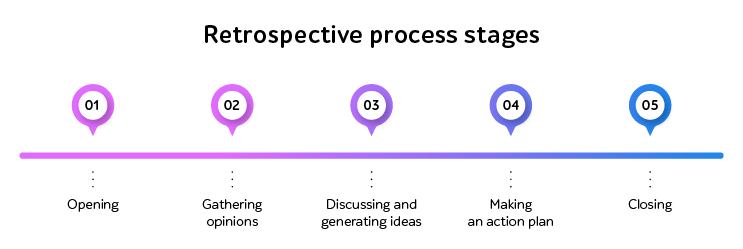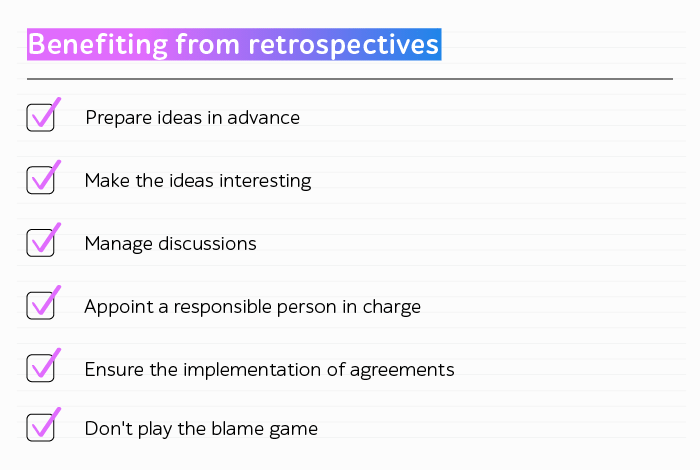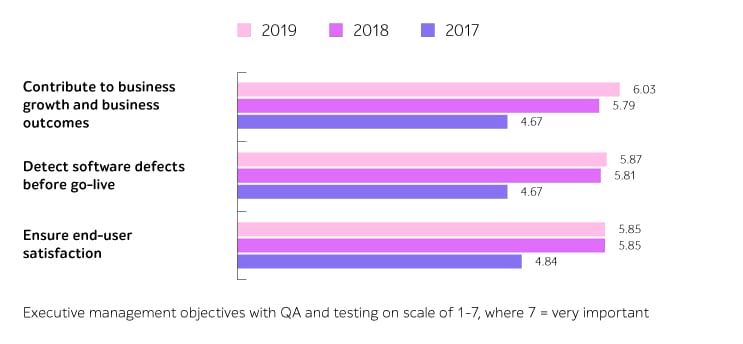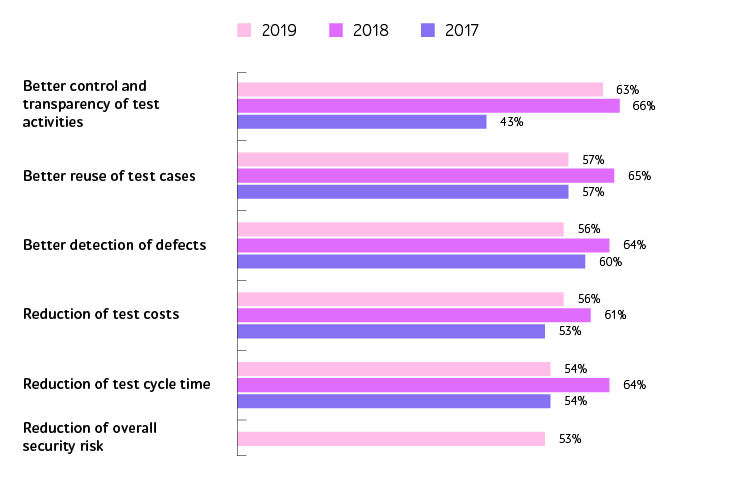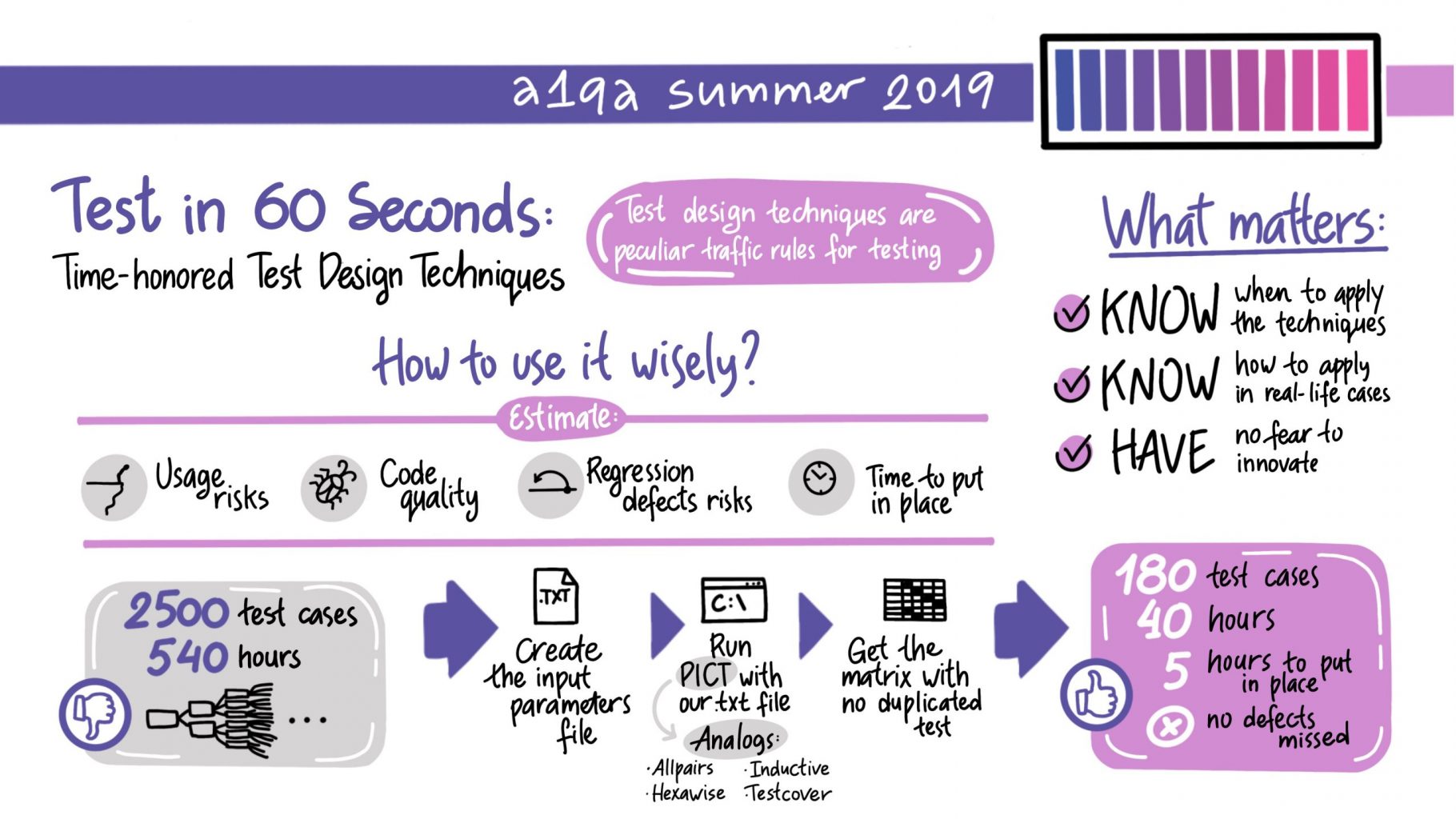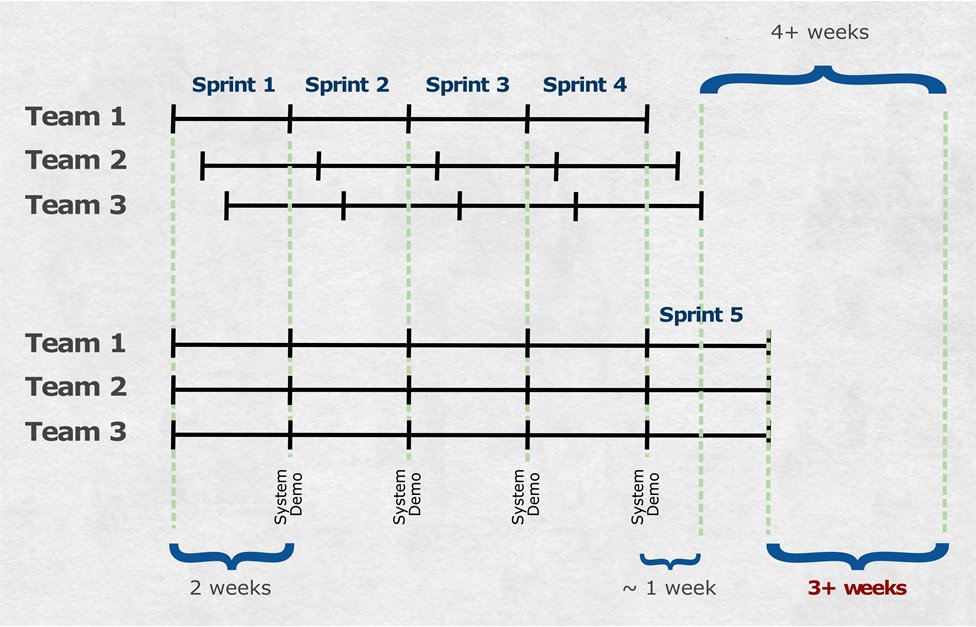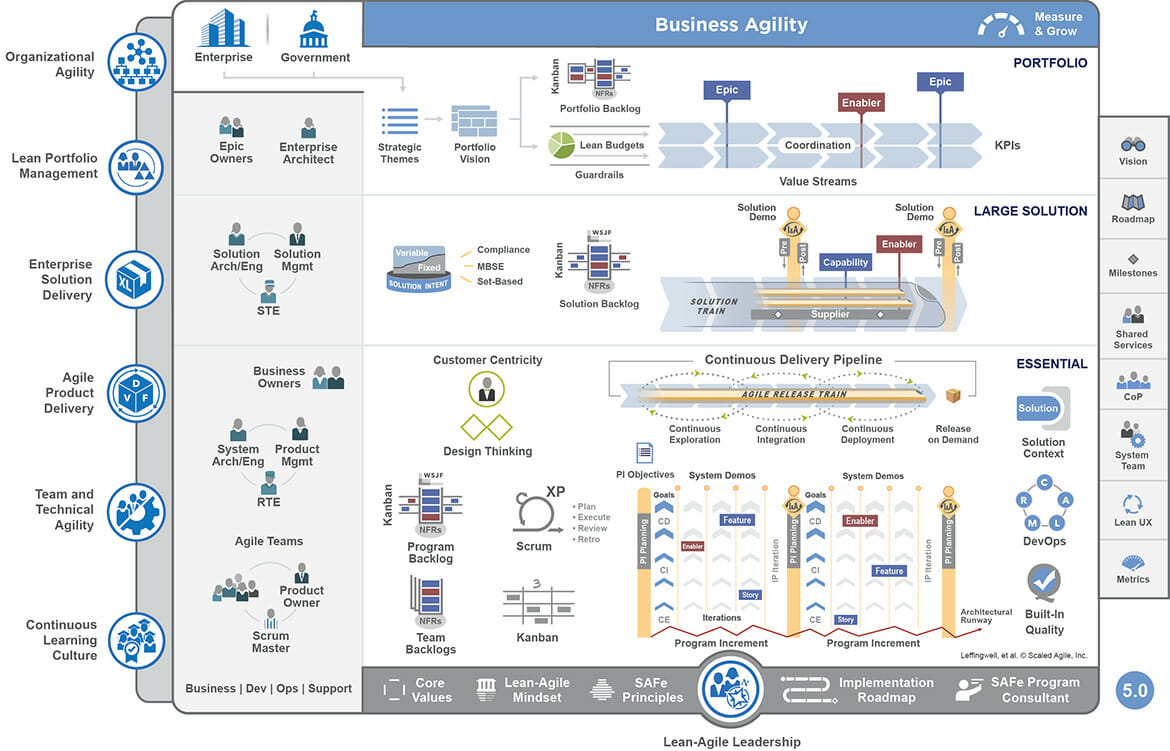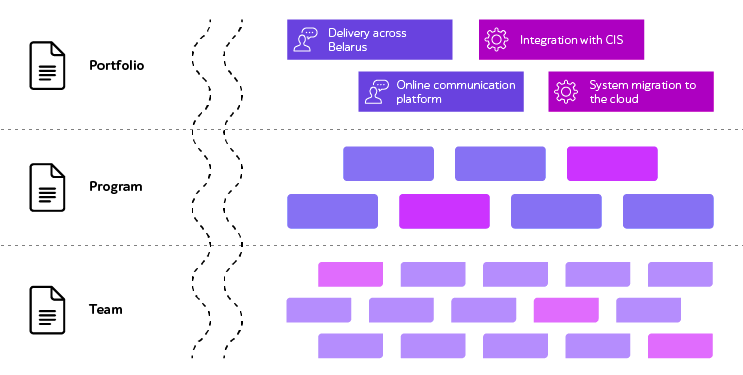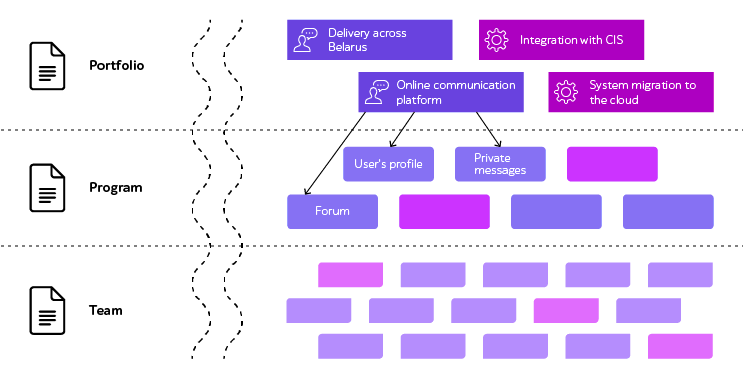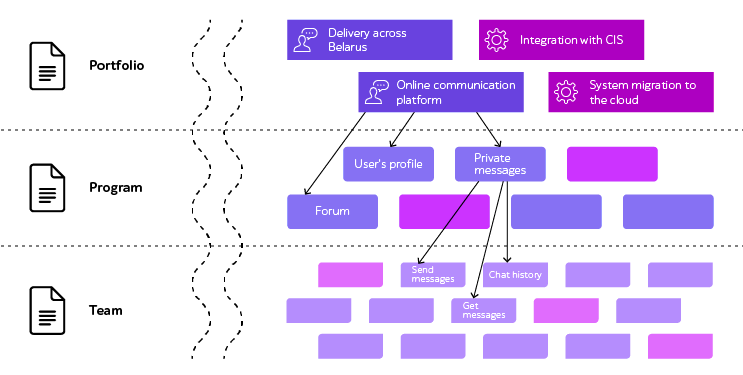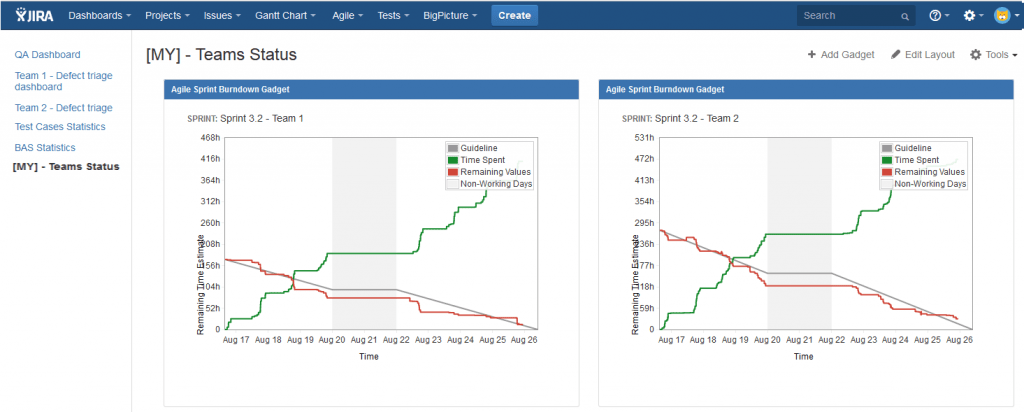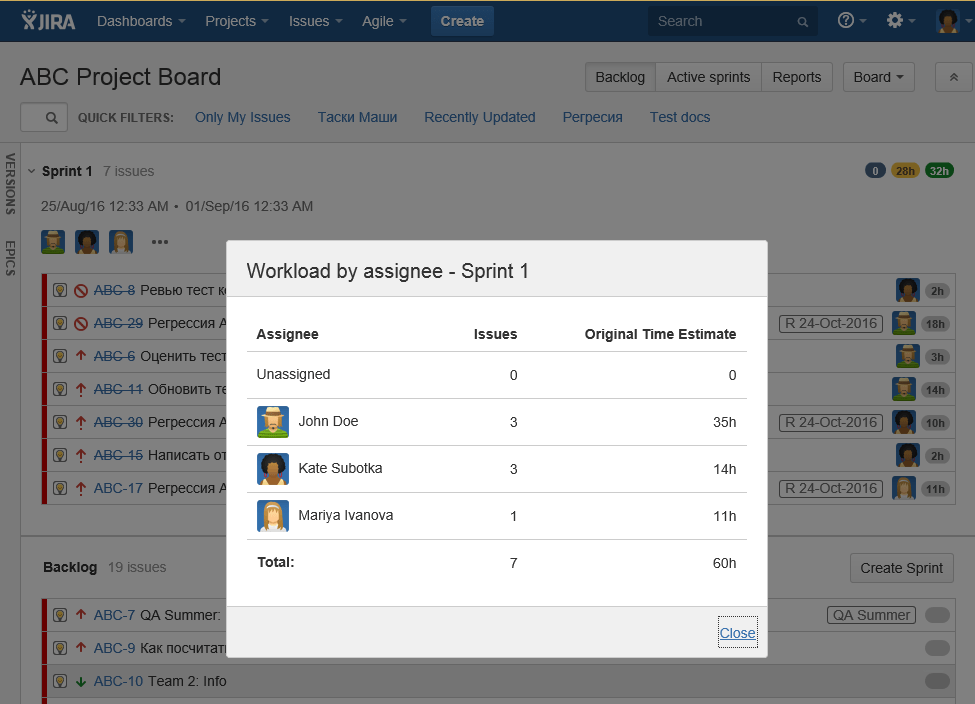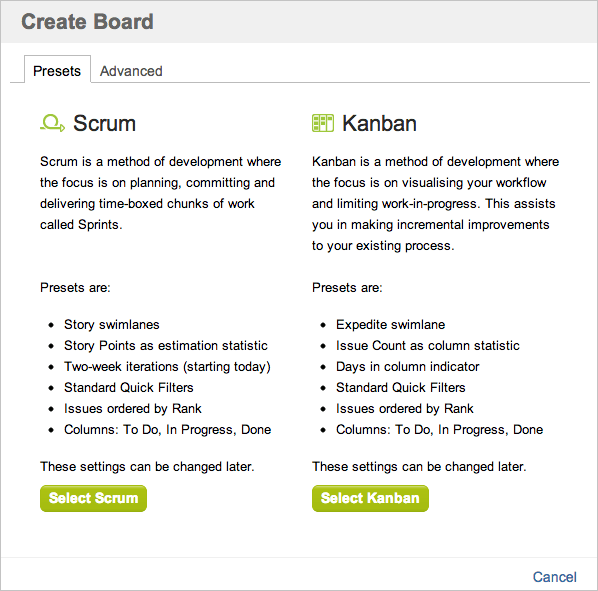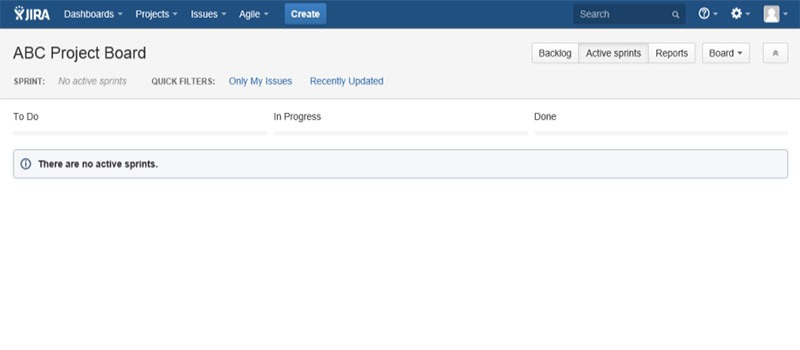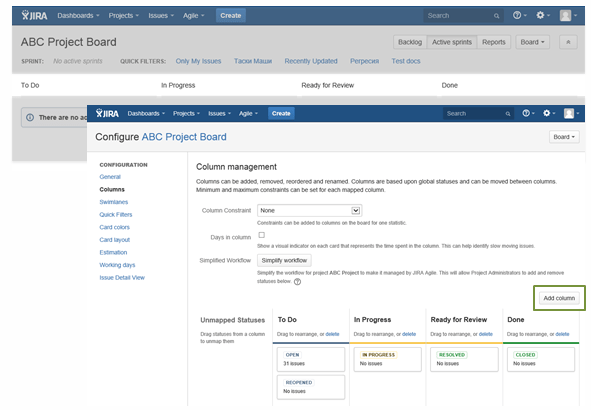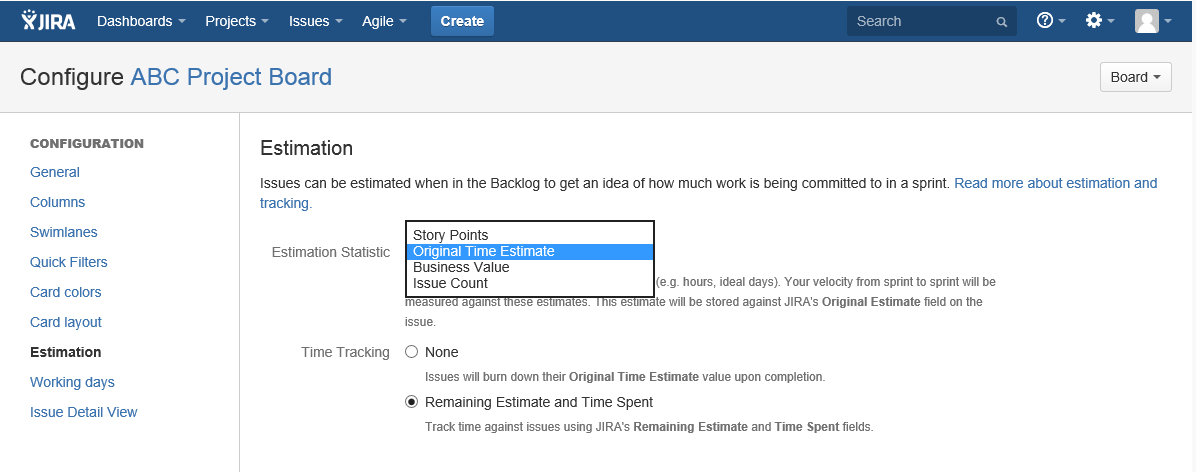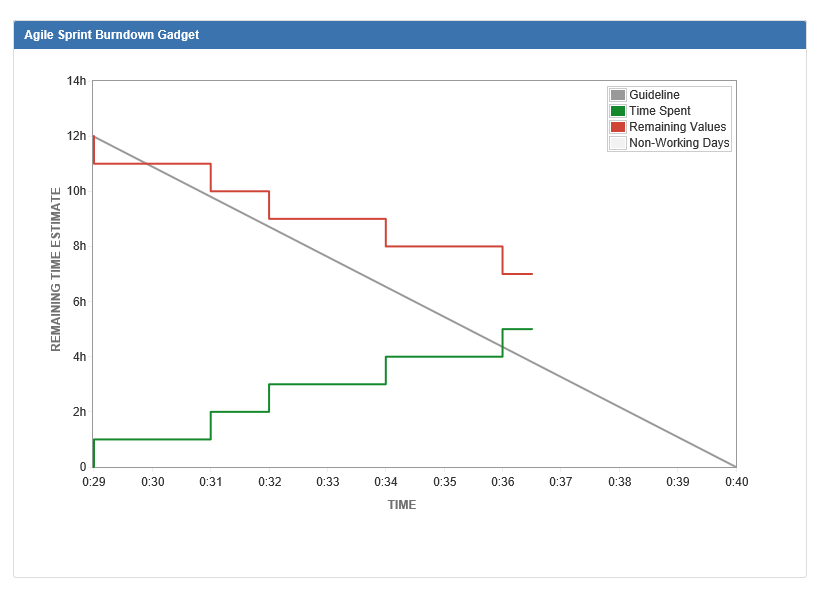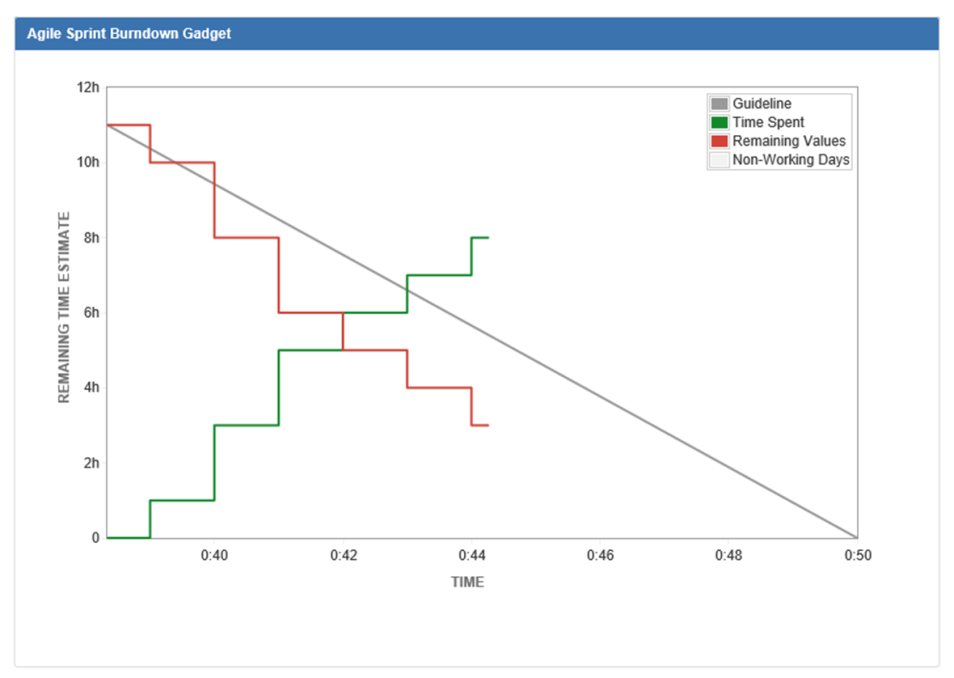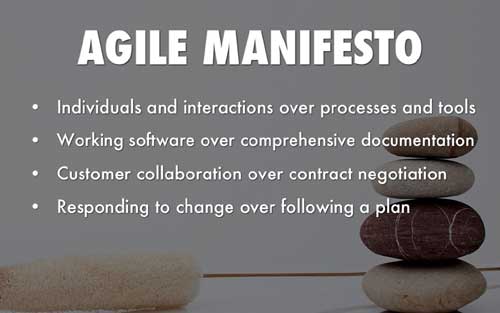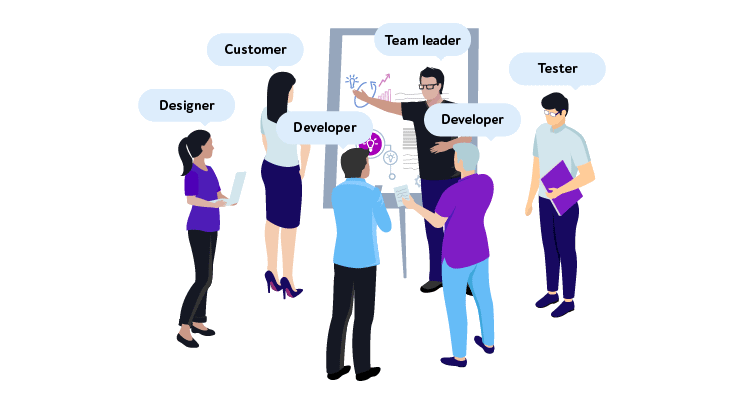Global market tendencies and user behavior are changing rapidly, if not talking about the software itself. Familiar situation? Find out how to get ahead of the curve with test automation in Agile and DevOps.
We are witnessing flexible methodologies gaining momentum. According to the latest 17th State of Agile Report, today, 71% of companies practice Agile; 36% of them implement DevOps; 42% give preference to a Hybrid model. And to keep up with the high tempo of these environments, many businesses choose test automation.
In this article we’ll go over:
- Why automated testing lies at the heart of Agile and DevOps
- What advantages it brings to the table
- Why it’s necessary to bear in mind manual testing
- How to efficiently set up test automation processes.
Test automation in Agile and DevOps
Before the advent of Agile and DevOps during the Waterfall era, testing was always the last step in software development. Is it time-efficient? Absolutely not. Flexible methodologies helped provide businesses with more flexibility, greater speed, and better communication between project members.
However, can manual testing alone keep pace with Agile’s rapid development cycles? It’s unlikely. Features evolve rapidly, making test automation essential for success in an Agile environment.
As Agile comes in numerous iterations, it allows testing the IT product more frequently from the initial SDLC stages. This is how experts identify more bugs from the get-go and eliminate them swiftly.
And what about test automation in DevOps? By supporting continuous development, deployment, and testing, DevOps aims to increase the speed and frequency of product releases (organizations that invested in DevOps automation saw a 61% improvement in software quality and a 55% reduction in IT costs). Again, this isn’t surprising. Delivering quality at speed is challenging without test automation. Let’s look at the image below — software testing isn’t a separate step as it was in the traditional development model. In DevOps, all specialists collaborate in a single flow.
If you introduce manual testing, DevOps pipelines may slow down, leading to more bottlenecks and taking extra time and expenses to fix them.
So, automated testing comes to the forefront within these methodologies to help organizations boost release cadences while rolling out a high-quality IT solution that meets end-user needs.
6 advantages of test automation within Agile and DevOps
Let me walk you through the details of main advantages of automated testing integrated into Agile and DevOps processes.
Advantage #1. Accelerated testing and go-to-market time
Because testing occurs in every sprint, the company can:
- Run tests continuously at any suitable time
- Detect and resolve software issues earlier
- Reduce overall testing time
- Lower costs associated with bug fixes
- Accelerate IT product releases.
For instance, implementing front-end and back-end test automation, supported by the AI-driven GitHub Copilot tool, helped a social game developer — specializing in various online mobile games — save 788 hours over nine months. This time saving is equivalent to creating an additional 225 automated tests.
Advantage #2. Enhanced software quality and reliability
According to the 17th State of Agile Report, 25% of organizations enhanced software quality and reliability by implementing Agile. The earlier you verify system features, the lower your risk of overlooking critical bugs. This allows you to produce an IT solution that operates seamlessly, mitigate the risks before the app goes live, and make sure it complies with requirements.
For example, the introduction of test automation by a developer of numerous trading solutions for investors globally helped minimize scripts code smells from 190 to 1 and detect 860+ issues of diverse severity levels, thus ensuring correct operation of complex financial calculations.
Advantage #3. Advanced risk mitigation
Imagine a scenario. The company missed a critical defect early on but discovered it at the last SDLC stage or in production. Downtime, loss of clients, damaged reputation — these are some possible results.
Take for example the case in July 2024, a software update from a cybersecurity firm triggered a global outage, leading to system failures on Microsoft Windows computers. The faulty update caused a shutdown error, impacting multiple industries. One airline company had to cancel 7,000 flights over 5 days, disrupting travel for 1.3 million passengers and incurring losses surpassing $500 million. As a result, the cybersecurity firm faced repercussions, including reputational harm and governmental scrutiny. Company’s executives were also required to testify before Congress about the case.
Of course, that was a major incident with huge consequences, however, Gartner notes that even typical incidents are costly, with average downtime expenses reaching $5,600 per minute. Not the best scenario, right? By introducing automated testing within Agile and DevOps processes, businesses enable early and cost-effective bug fixing, helping significantly cut QA expenses.
Advantage #4. Boosted capability to manage changes
Alterations to business needs or software requirements are more common for dynamic Agile and DevOps projects, requiring all involved members quickly adjust to them and make associated changes to QA workflows. Test automation aids flexibility to efficiently respond to a modified testing flow without delays in schedule.
Advantage #5. Increased customer satisfaction
Test automation is essential for improving customer satisfaction by delivering a smooth user experience. It ensures required stability across various environments, devices, and user interactions, minimizing unexpected failures and performance issues. By enabling rapid feedback loops and continuous validation, it helps detect and resolve customer-reported issues promptly, showcasing a proactive approach to high technical health.
Advantage #6. Extended test coverage
Within Agile and DevOps landscapes, automated testing contributes to validating more functionalities, edge cases, and system integrations. By expanding test coverage, organizations can uncover issues that might be missed in manual testing. This thorough validation reduces the likelihood of defects reaching production, ensuring more dependable IT products.
Is there a place for manual testing in Agile and DevOps?
Agile and DevOps primarily focus on automated testing to maintain their fast-paced rhythm. However, this doesn’t require total elimination of manual testing, as in some cases, it’s not as effective to substitute it with automated checks.
Exploratory testing, for example, allows testers to deviate from typical scenarios, examine the software themselves, and rely on intuition to discover hidden system vulnerabilities.
Or ad-hoc testing. QA specialists don’t have to follow a clear plan, create test cases and documentation, they just find the app flaws by conducting random checks and adopting non-standard software testing methods.
Setting up test automation for Agile and DevOps: 3 tips to follow
I will give my top 3 tips for efficiently setting up automated testing within Agile and DevOps.
Tip #1. Choose the right tools
The variety of test automation tools is vast, ranging from free and open-source to fee-based and customized. Choosing the wrong one may negatively affect QA processes, requiring more time and money for testing or even re-starting all procedures from scratch.
As there is no one-size-fits-all test automation tool, it might be easier to consider the following aspects before selecting the most appropriate tool:
- DevOps and Agile tool integration compatibility
- Purchase and ongoing support cost
- Required technical skills
- Maintenance and scalability
- Community support and documentation availability.
Tip #2. Onboard the experts with the required skillset
Working in fast-paced environments, test automation engineers should have excellent time management skills to effectively organize their work, accomplish all tasks on time, and meet project deadlines.
In Agile environment, QA experts maintain ongoing collaboration with business analysts, developers, managers, and product owners during regular retrospectives, iteration planning, sprint reviews, and other meetings. This requires proficiency in communicating and reporting to establish robust interaction between all project members and quickly respond to changes and updates.
Coding expertise, including the in-depth knowledge of Java, JavaScript, Python, C#, and others, is pivotal for QA automation engineers helping them enable effective writing, execution, and support of scripts. Additionally, they should be proficient in mastering CI/CD and containerization tools, cloud testing platforms (e.g. AWS Device Farm), and most in-demand test automation frameworks, such as Cypress, Playwright, WebDriverIO, Appium, and others.
Tip #3. Don’t overdo test automation
To succeed with Agile and DevOps environments, test automation should come first. But not 100% as some types of tests simply cannot be automated, such as exploratory and ad-hoc. Or if you face one-time tasks, then it is time for manual testing, which is faster and much cheaper for this case.
When planning to automate, ask yourself these questions to understand whether it is reasonable or not. How frequently will these checks be run? How much effort does it require? Will it help cut QA costs? And if you know that the tests are repeatable, monotonous, and time-consuming, then test automation is of help.
Wrapping up
Companies place test automation at the core of Agile and DevOps environments to accelerate testing cycles, enhance software quality, mitigate risks, boost customer satisfaction, increase flexibility, and broaden test coverage. However, businesses continue to rely on manual testing for specific one-time tasks, as well as exploratory and ad-hoc testing scenarios.
To set up a well-tuned test automation strategy within flexible methodologies: choose the right tools, onboard QA experts with the required skillset, and don’t overdo automated testing.
In case you are facing difficulties in effectively adopting test automation within your Agile and DevOps processes, reach out to a1qa’s specialists.


